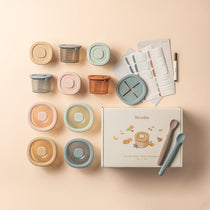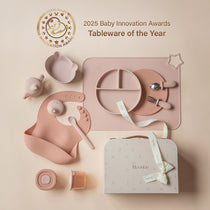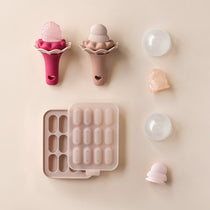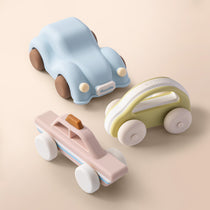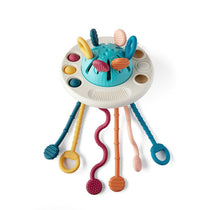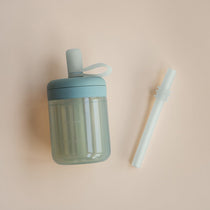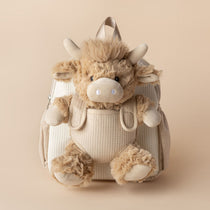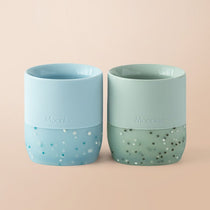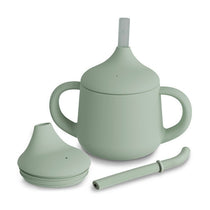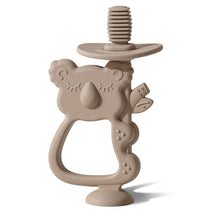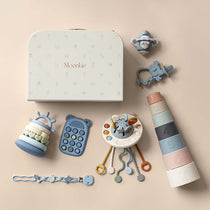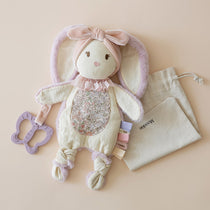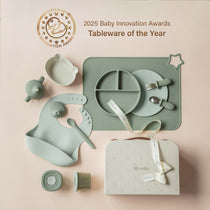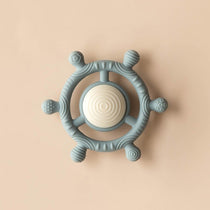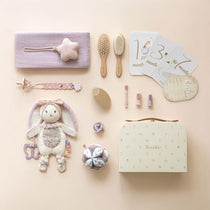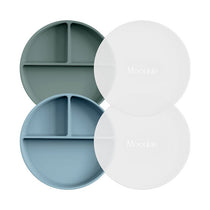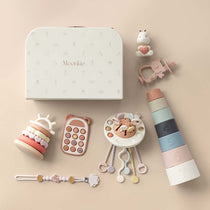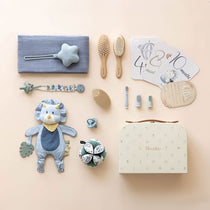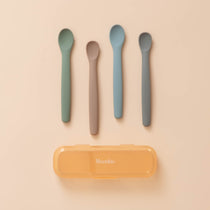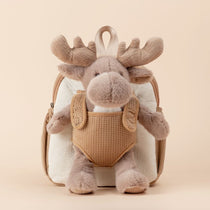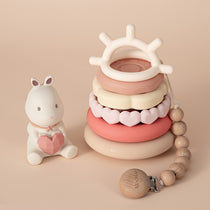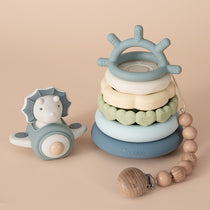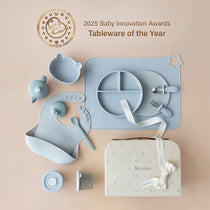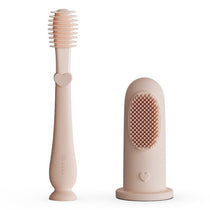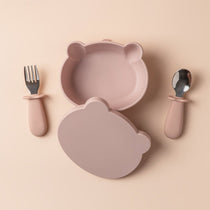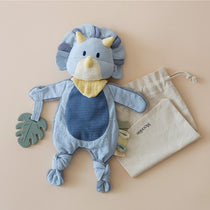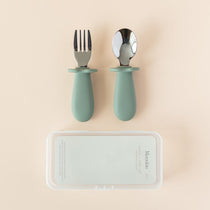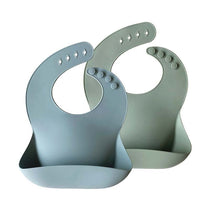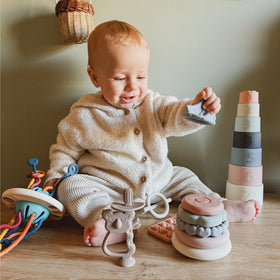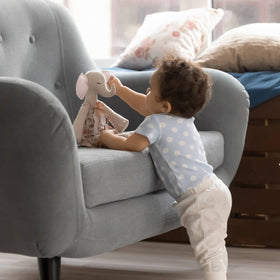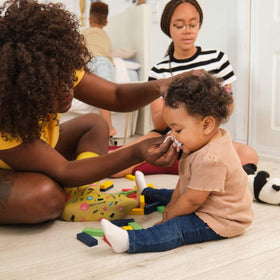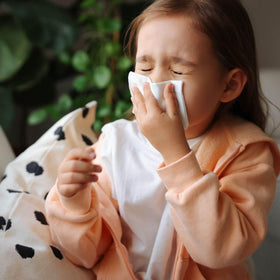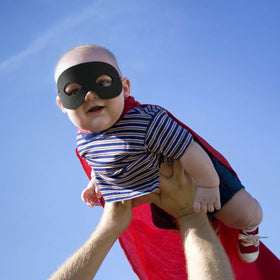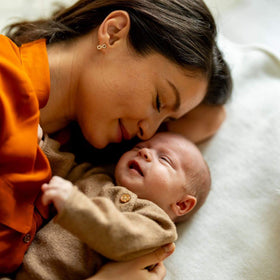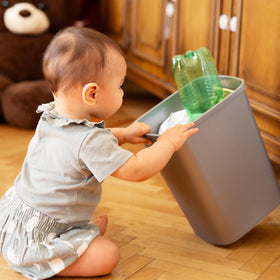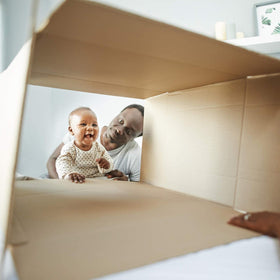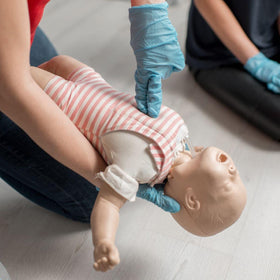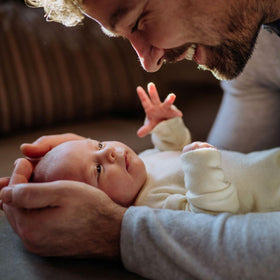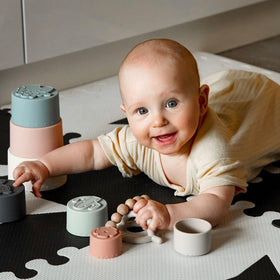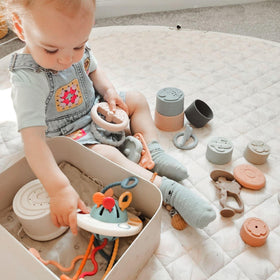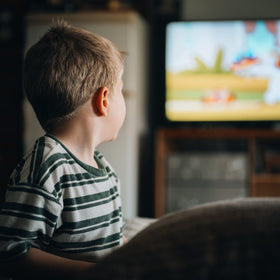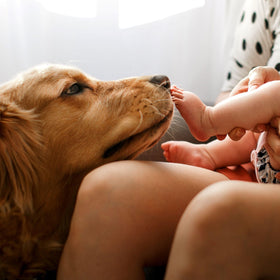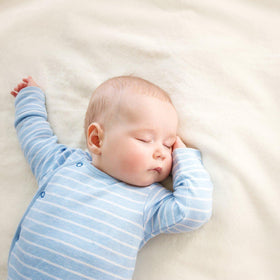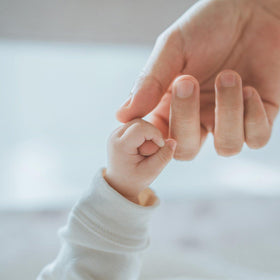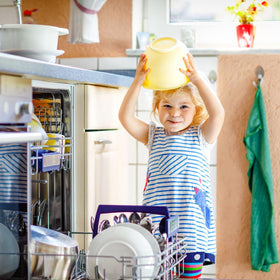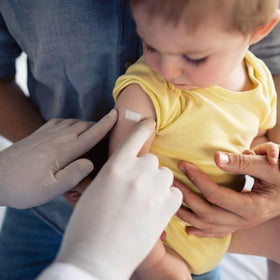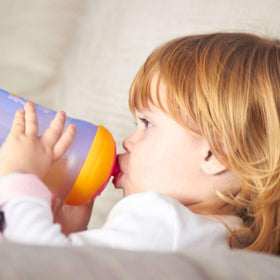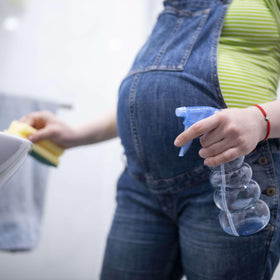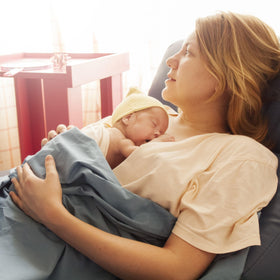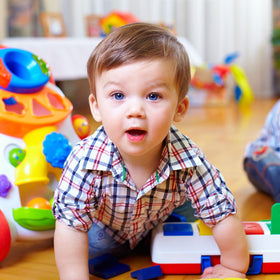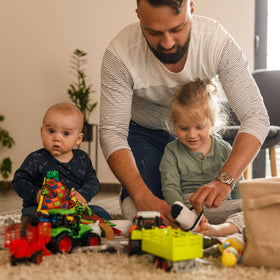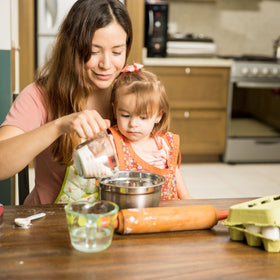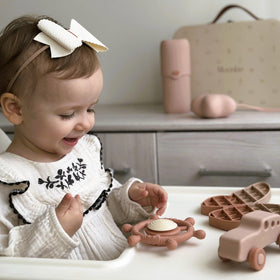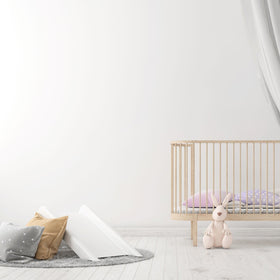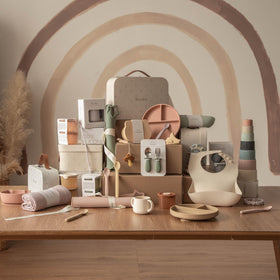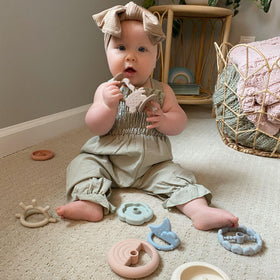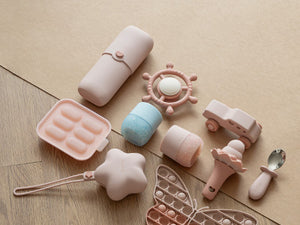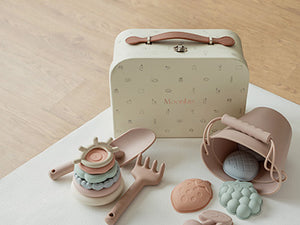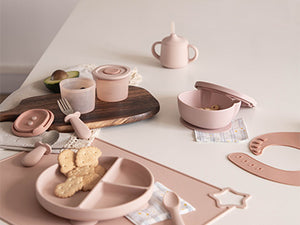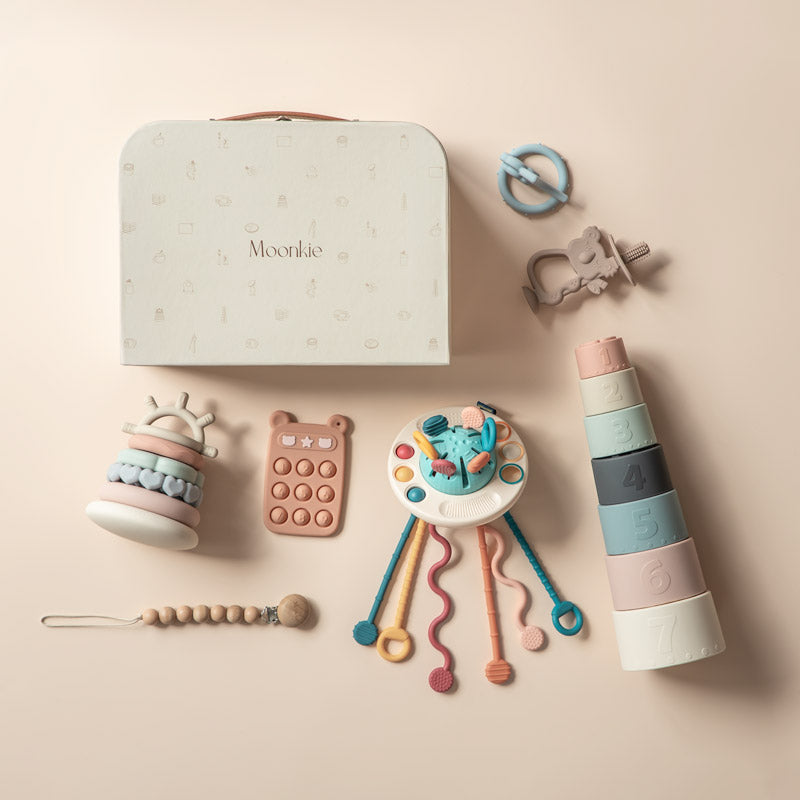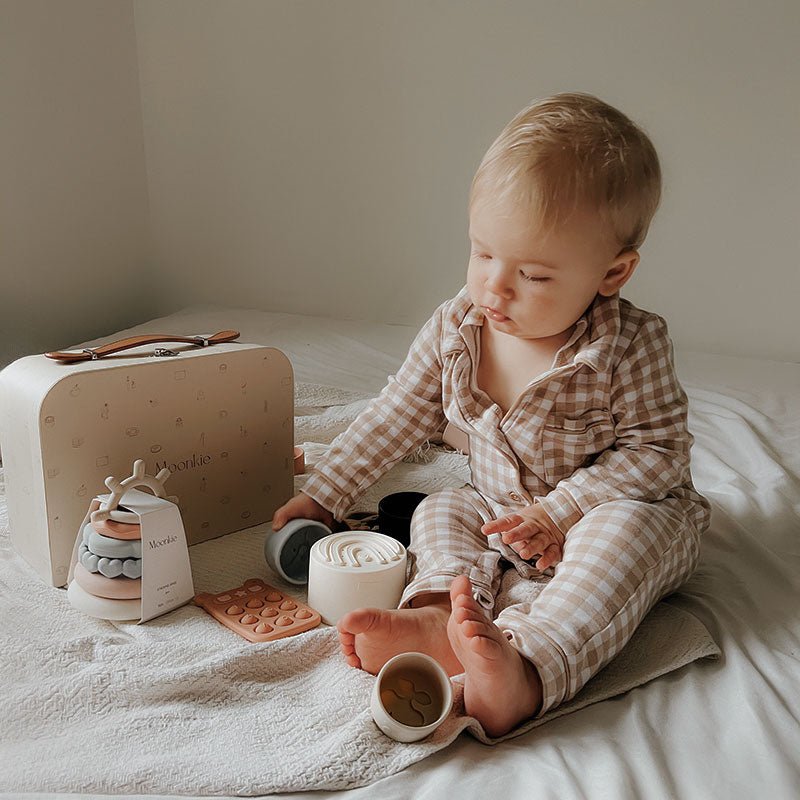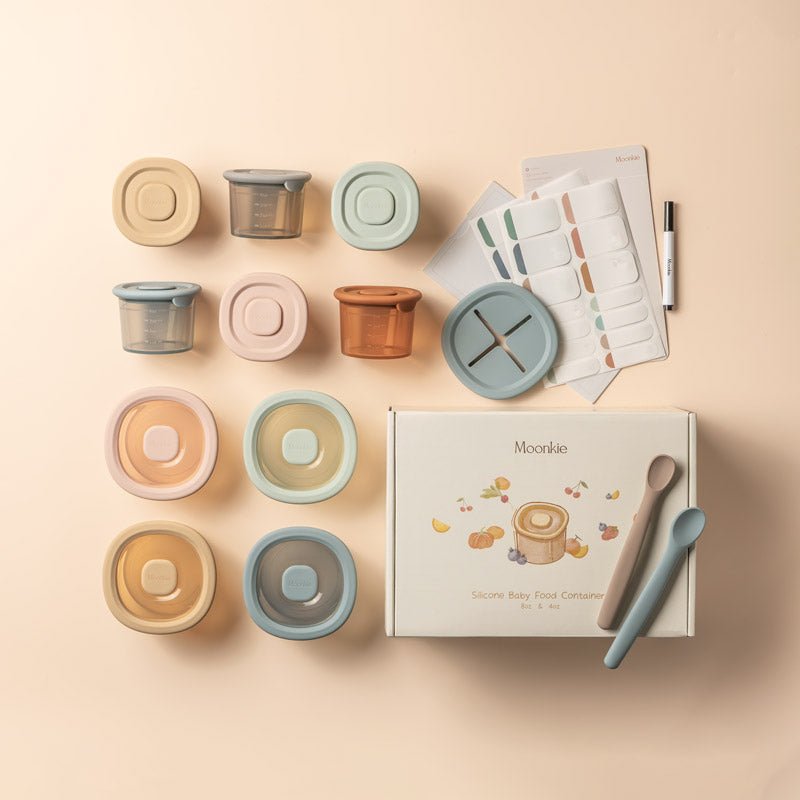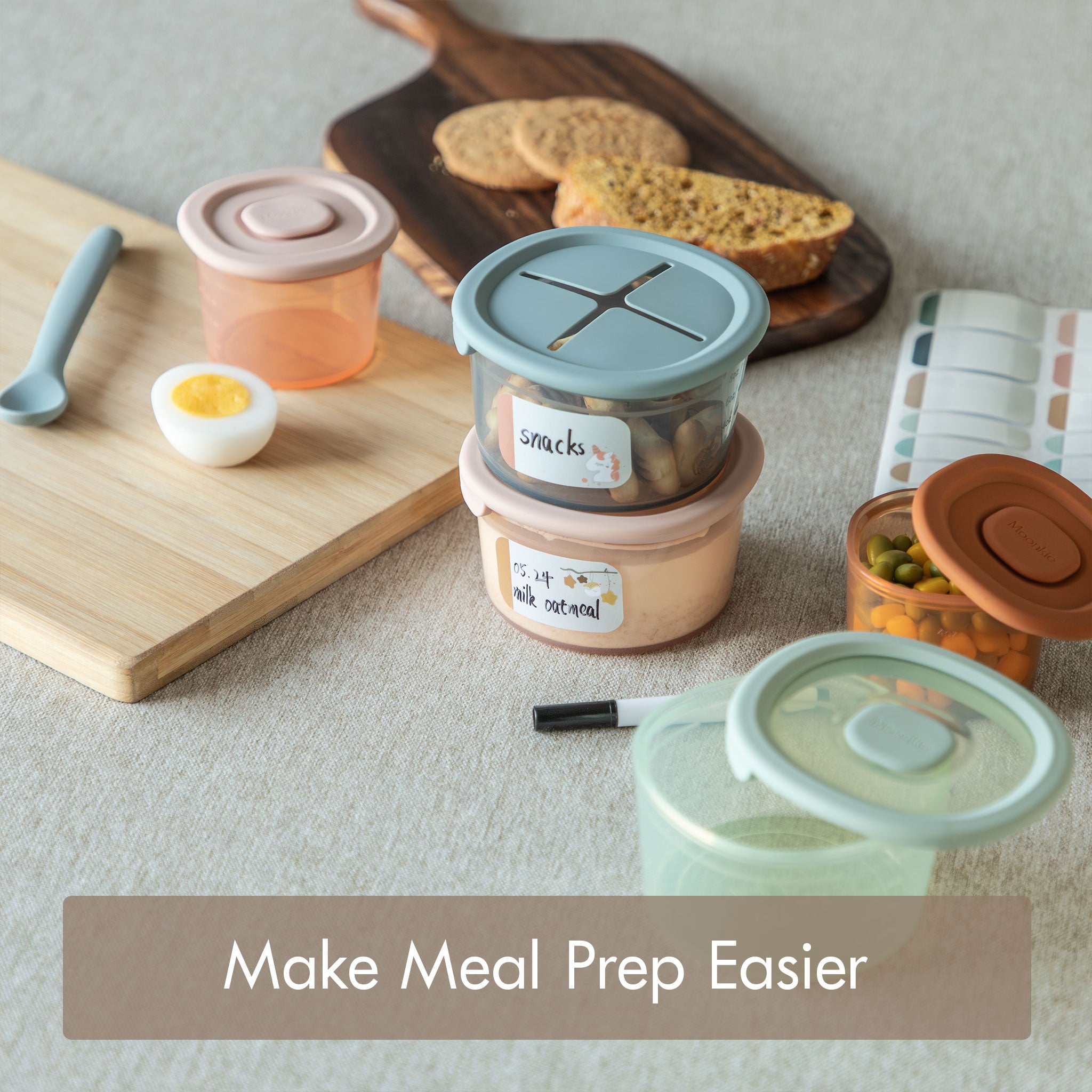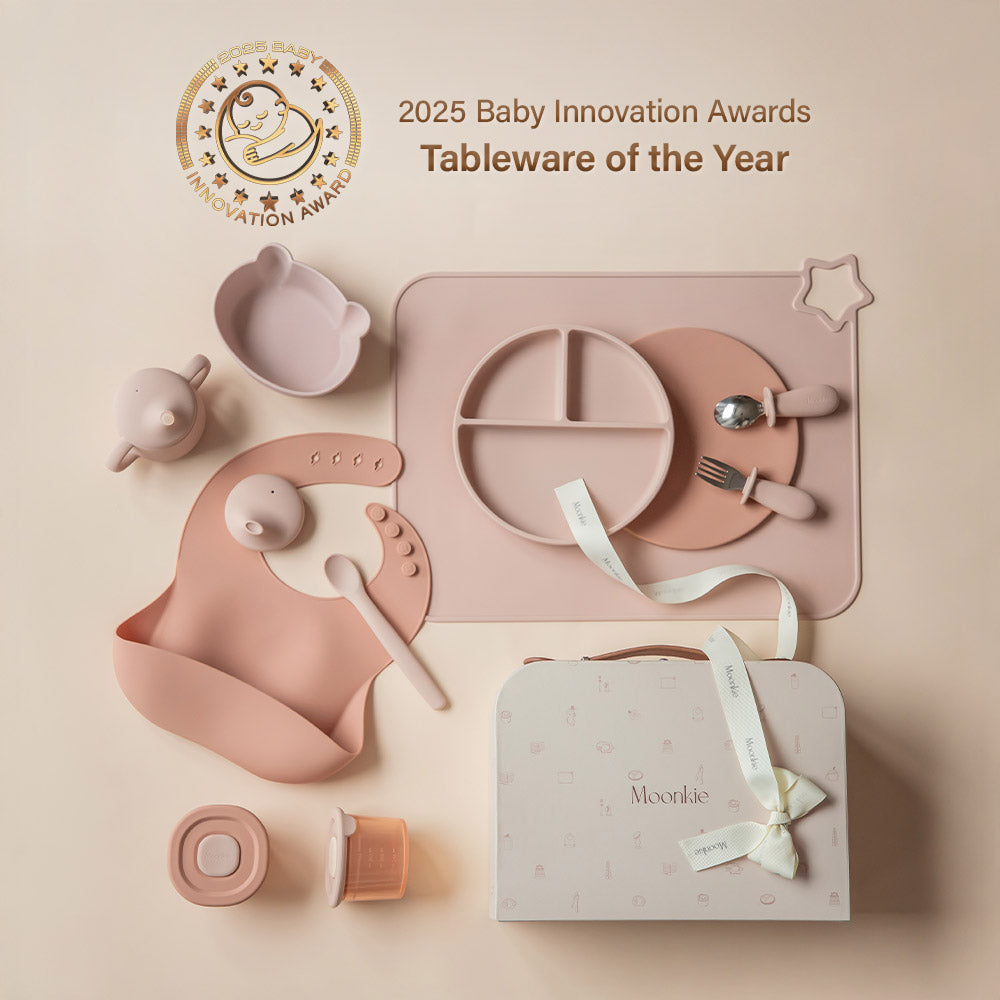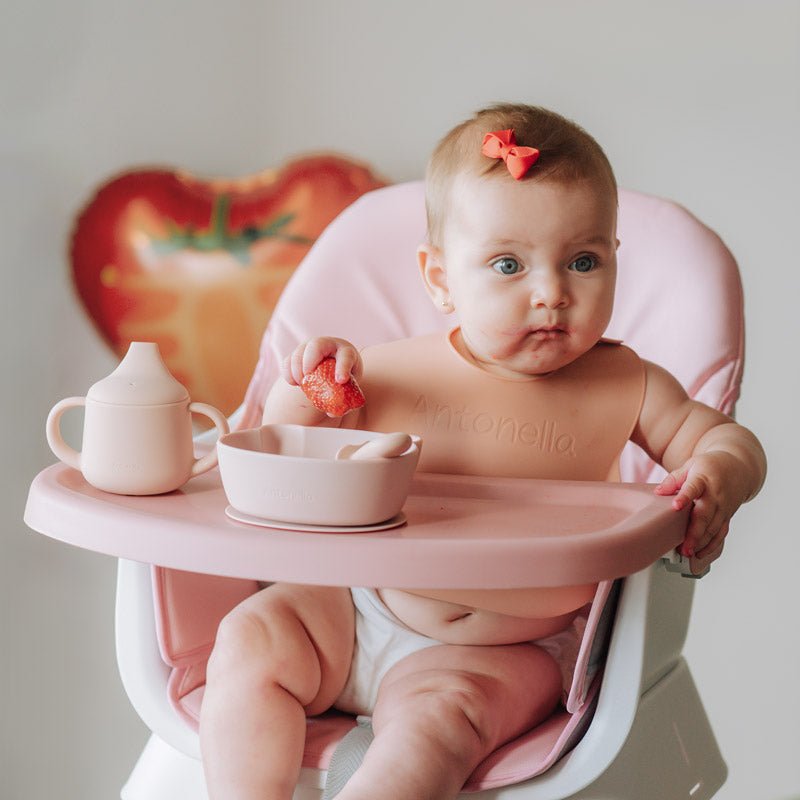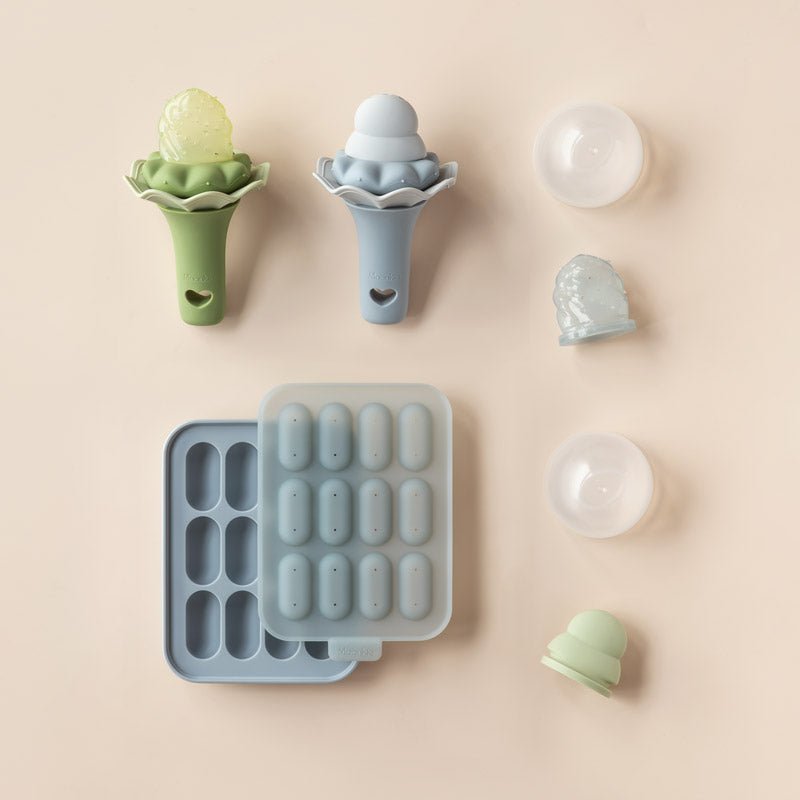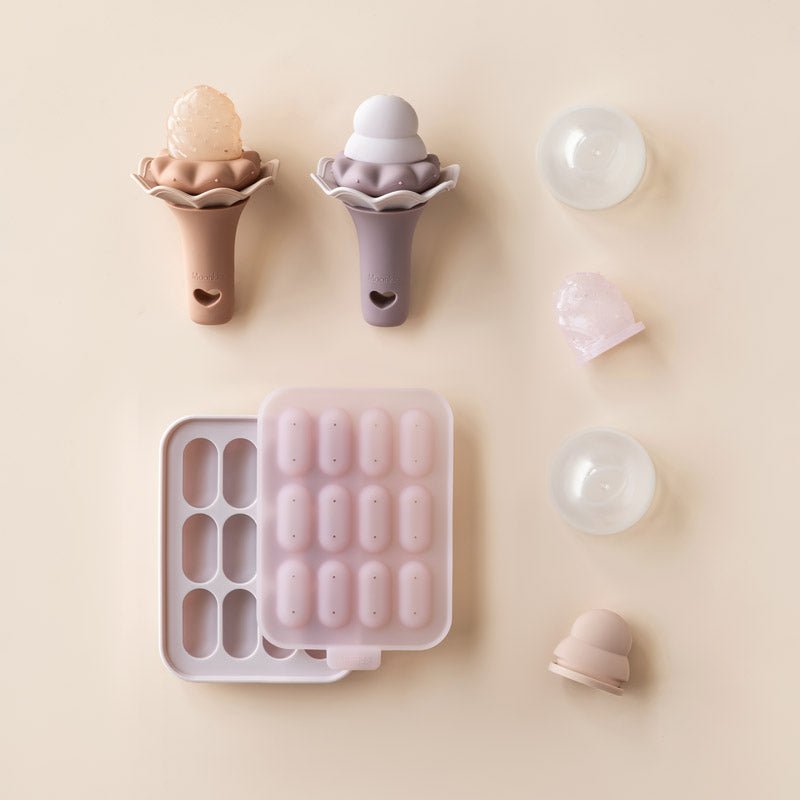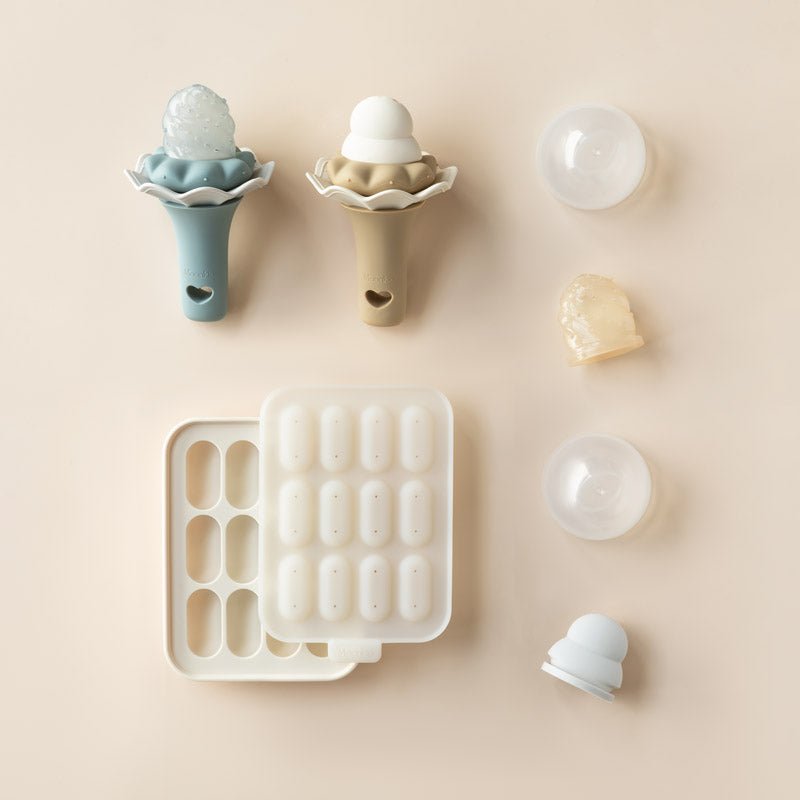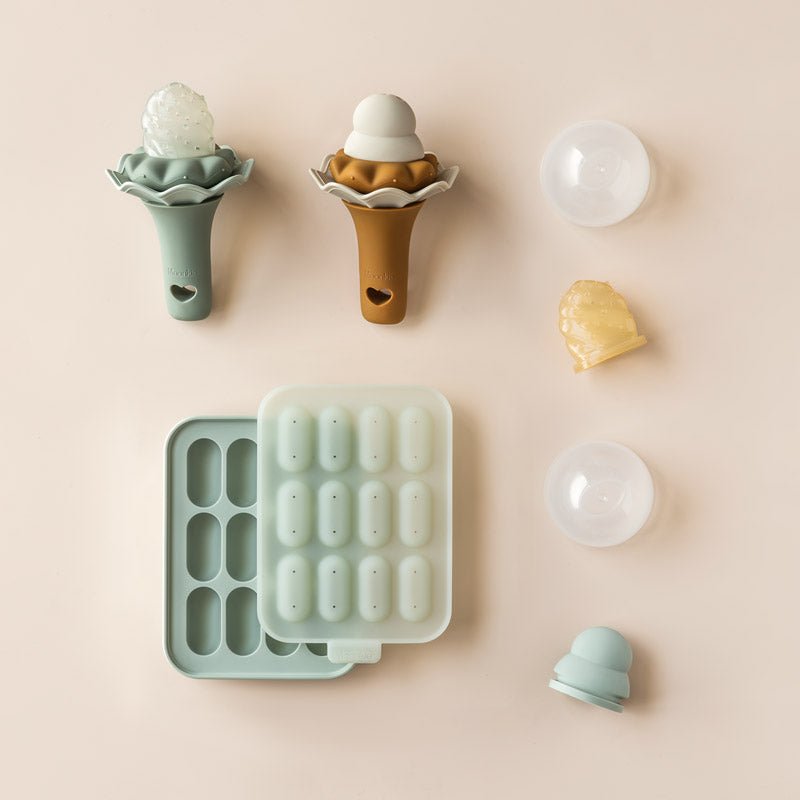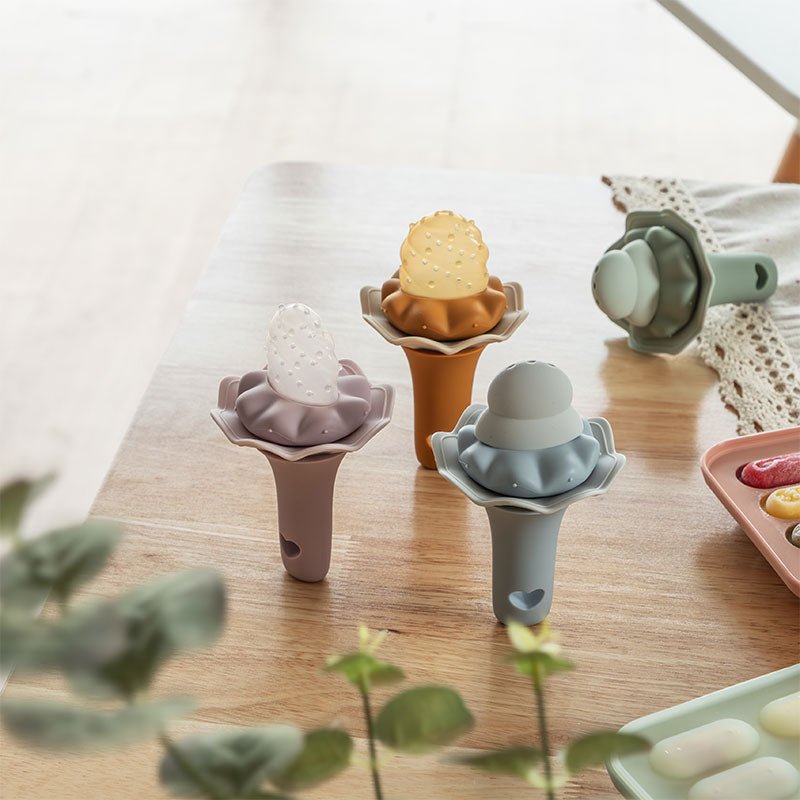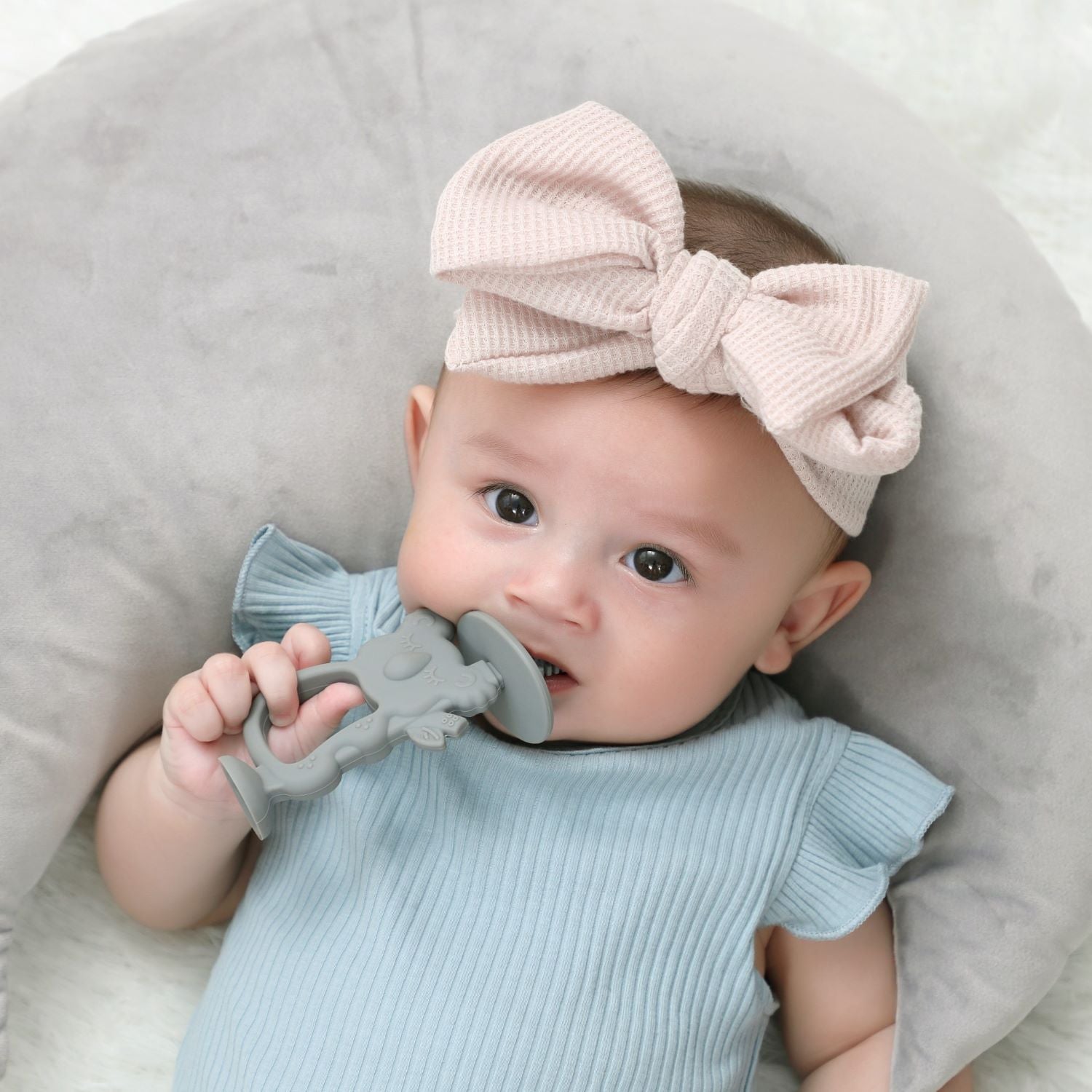Parents have a lot on their plates when it comes to finding safe products for their babies. Many baby products are made with silicone, but not all silicone baby products are made the same.
Some parents may not realize different grades of silicones may be used in the products they have in their homes right now. Knowledge is power which is why you always want to know exactly what is used to make products that your baby is coming in contact with, especially if they’re putting them in their mouths!
But, let’s face it, babies put just about everything in their mouths which is why you need to keep a close eye on any product your baby is coming in contact with, even if it’s not intended for their mouths.
We’re going to take a closer look at silicone baby products and the different types of silicone used by companies, including Moonkie. We also have other vital information you need to know about silicone so that you can keep your babies safe and make informed decisions about the products you buy.
What is Silicone?
Silicone is the earth’s second most abundant element, following oxygen, and makes up more than a quarter of the Earth’s crust by mass. When it reacts with methyl chloride and water, you get silicone polymers that are incredibly resistant to high heat and low temperatures.
This temperature resistance combined with its flexibility and moisture resistance is why silicone is used in so many products, including many baby products.
Different Silicone Standards
Not all silicone is made equal. Various standards play into how safe they are and what they are used for. Let’s take a look so you know which are the highest-quality silicones used in silicone baby products.
Food-Grade or FDA-Grade Silicone
Food-grade silicone, also referred to as FDA-Grade silicone, is silicone that has been certified to be safe to come in contact with food. It is known for these characteristics:
It is extremely heat-resistant and can withstand extreme temperatures.
Food-grade silicone is non-toxic.
It is resistant to damage and can conform to different shapes and sizes.
It is dishwasher and microwave-safe.
This type of silicone is certified by the U.S. Food and Drug Administration (FDA) and the European Food Safety Authority (EFSA). Any type of silicone with this label has undergone several tests to ensure that it does not release any toxins when it comes in contact with food. It does not contain BPA, latex, lead, or phthalates.
FDA-grade silicone is used in baby products such as pacifiers and toys as well as food storage containers, baking molds, and more. Food-grade silicone is heavily regulated compared to regular silicone which is why baby product manufacturers choose it over materials.
To obtain an FDA-grade certified status, silicone products must follow the rules outlined in 21 CFR 177.2600 to ensure that they are free from harmful chemicals and are resistant to conditions without contaminating or downgrading food.
FDA-grade silicone products should be resistant to wear and tear so that they can be used for a long time. They also need to be waterproof and resistant to mold and fungus.
LFGB-Grade Silicone
When you’re looking at the highest-quality silicones, LFGB-grade is at the top of the list. It is considered the gold standard for food safety in Europe. LFGB stands for Lebensmittel- und Futtermittelgesetzbuch, which is German for "Foods, Consumer Goods and Feedstuffs Code".
LFGB silicone is mainly used throughout Europe, specifically in Germany and France. It is tested more thoroughly than FDA-grade silicone to ensure that no dangerous chemicals are released into food when products are used.
The LFGB testing process is detailed and starts with applicants providing samples and product information. From there, the necessary tests are outlined so that the applicant can agree to all testing.
The sample is then tested against LFGB standards to see how it holds up to the regulations. Once the test is complete, results are issued and if the product passes it will receive the LFGB approval label.
You can tell if products are LFGB certified if they have “LFGB approved” labels on them. They will carry the “knife and fork” symbol to show they have passed the German LFGB testing and are safe to use with food.
One of the main reasons why LFGB silicone products are more expensive than those made from FDA-grade silicone is because the testing is stricter.
Platinum-Grade Silicone
If you hear someone talking about platinum-grade silicone, they are referring to silicone that uses platinum as a catalyst during its curing. This leads to a durable, food-safe material which is why platinum-grade silicone is considered one of the highest-quality silicones around.
It is also one of the more expensive types of silicone, which is why you won’t find it in cheaply made products. Platinum-grade silicone is not cured with peroxide, making it the purest product out there.
Platinum-grade silicone is used in food-safe products, medical devices, and mold-making. Similar to food-grade silicone and LFGB-grade silicone, platinum-grade silicone can resist a wide range of temperatures, is extremely durable, and has no harmful byproducts, making it optimal to use in baby products.
When you read the labels of many baby products, you may see that platinum-grade silicone is used. You will see platinum-grade silicone used in pacifiers, baby bowls, plates, and cups, as well as bottle nipples.
Why is Silicone Used in Baby Products?
There are several reasons why different types of silicone are used to make baby products.
Silicone does not react with the body or release harmful chemicals when it is exposed to food or saliva.
Silicone baby products are free from Bisphenol A (BPA) and other harmful chemicals.
Silicone is soft for baby’s developing gums.
Silicone is easy to clean & doesn’t harbor bacteria
Silicone is a durable material that can withstand plenty of wear and tear.

Common Silicone Baby Products
Chances are you have several silicone baby products in your home. These are some of the most common baby products you will find silicone used to make:
Baby bottle nipples
Sippy cup tops
These baby products get a lot of use and are washed frequently which is why they need to be made of some tough stuff!
Are Silicone Baby Products Dangerous?
When silicone baby products are made from food-grade silicone, LFGB-grade, or platinum-grade silicone, they are generally considered not to be dangerous and are a much safer option compared to other plastic baby products. This is because they are non-toxic and do not contain harmful chemicals.
Choosing high-quality silicones is so important because not all silicone baby products are made the same. Some cheaper brands use plastic fillers or additives to cut costs. This can compromise the strength and safety of the products.
How do you know if your silicone baby products contain potential fillers?
Always read the labels. Look for verification that the product is FDA-approved or LFGB-certified. Both of these certifications will indicate that the product has been thoroughly tests for safety and is free from fillers as well as harmful chemicals like BPA and phthalates.
Drawbacks to Choosing Silicone Baby Products
While there are many advantages to choosing silicone baby products, there are also some drawbacks. It’s important to weigh these so that you can make an educated choice as a consumer.
There May Be Chemical Fillers
As we mentioned above, cheaper silicone products contain chemical fillers because they can reduce manufacturing costs. This reduced cost comes at a price of potentially harming your little ones.
High-Quality Silicone Costs More
High-quality silicone baby products are typically more expensive than toys and products made out of other materials.
Remember, you get what you pay for. While silicone baby products may have higher price tags, the higher quality ones also come with peace of mind that you are giving your baby the best products. You can’t put a price tag on that.
Not the Most Eco-Friendly
Silicone baby products are not biodegradable, so they are not eco-friendly. Since they have a slow decomposition rate, they will remain in landfills longer than other products. This may not settle well with environmentally conscious parents.
On the flip side, the durability of silicone baby products means they can be used for a long time and also passed down to younger children.
FAQ About Silicone Baby Products
Do silicone baby products smell?
Silicone is odorless on its own. Sometimes silicone products can develop a soapy smell or taste if soap residue clings to the surface. This is also true of food oils that can cling to the silicone. Cleaning silicone products thoroughly after each use can prevent this from happening.
How do I know a product is made with the highest-quality silicone?
Look for certification from the FDA, U.S. Consumer Product Safety Commission (CPSC), and American Society for Testing & Materials (ASTM). This will ensure that the products meet safety and quality standards. Also, consider the texture because the highest quality silicone will have a smooth texture that is easy to clean and does not attract dirt.
What is the best way to clean silicone products?
Cleaning silicone products is easy. They can be thrown in the dishwasher or sterilized in boiling water for three to five minutes.
Can I sterilize silicone products?
Yes, most silicone products are safe to sterilize using either boiling water or a non-UV sterilizer.
What is the best way to store silicone products?
Store silicone products in a cool, dry place. Avoid prolonged sun exposure that could lead to discoloration.
The Bottom Line
When it comes to silicone baby products, you need to choose the ones that you feel comfortable giving your child. By understanding the benefits and drawbacks of silicone baby products, as well as the different standards that come with each, you can make an informed choice about what type of products you’re going to give to your little one.
Reading labels and asking questions is so important when it comes to baby products.
At Moonkie, we are transparent about the materials used in our products and ensure that all products undergo extensive testing. This reassures parents that the products their children are using are the best possible ones out there.


